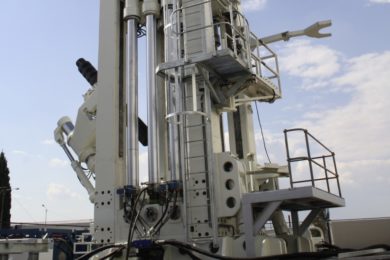Vale has provided an update on its so-called dam decharacterisation plan, which it defines as “the process for a dam to be reincorporated into the relief and the environment.” Essentially it means that the tailings dam structure no longer serves its primary purpose of retaining tailings, ensuring zero risk for the environment and the surrounding communities. The company pumps surface water and builds peripheral channels to lower the level of material inside the structure. The pumping process of some dams involves drilling and operation of deep wells. The dam slope is then reinforced to stabilise the structure and prevent any collapse during treatment and construction works.
After reinforcement works, tailings are partially or totally removed from the dam, according to the structure. The following phase is the treatment and revegetation of slopes and surrounding region with native species to reintegrate the area into the local environment. Finally, the last part of the process involves monitoring and controlling the environmental recovery of the area after decharacterisation is complete. This phase also includes monitoring of physicochemical parameters and the biological stability of the region.
One of the key target milestones therefore at Vale is to reduce the risk level at the company via the decharacterisation of its upstream tailings dam structures, a process that will continue over the coming years. The first decharacterised dam, 8B, was completed in December 2019; the second one, Fernandinho dam, will be concluded in 2020. Vale has also completed the construction of the containment structure for Sul Superior Dam in the city of Barão de Cocais, while the containment structures for B3/B4 and Forquilhas dams will be concluded in H1 2020, increasing the safety conditions in the areas downstream from the dams and allowing the decharacterisation work at these sites to start thereafter.
The progress of the decharacterisation works has provided more precise inputs to the engineering requirements, and, based on these new specifications, the provision for the decharacterisation of the nine upstream dams, whose construction is similar to the Dam I construction method, will be decreased by $447 million. Some of Vale’s dams have smaller internal dykes that were built using the upstream construction method and that will also be decharacterised. Updated information regarding the structures allowed for a more complete engineering plan and accordingly Vale is provisioning additional $315 million to the amount recognized in Q2 2019.
Following the Dam I rupture, Vale has initiated an in-depth technical analysis of the history and current condition of all its dams. These studies, called “As-Is”, are expected to be concluded by June 2020 and pay special attention to those structures whose original projects do not retain the necessary completeness and precision of data as required by Ordinance nº 70.389/17 DNPM, mostly older structures incorporated by Vale in former acquisitions.
The results of the “As-Is” analysis and technical studies conducted by Vale, such as the September/2019 Regular Safety Inspection, led the Brazilian National Mining Agency (ANM) to reclassify the raising method of Doutor and Campo Grande dams from centre line to the upstream construction method, and Vale to include them in the decharacterisation plan. Vale reinforces that the information was duly filed with ANM in September 2019 and publicly disclosed through Vale’s website.
As the publication of Resolution ANM 13/19, dated August 2019, has created the same legal obligations as upstream dams for drained stack structures, three of the latter were also included in the list for decharacterisation. Consequently, Vale will provision $716 million for the decharacterisation plan of Doutor and Campo Grande dams and the three drained stacks structures, for which no amount was recognised previously.
Considering the above-mentioned amounts and the addition of $87 million of other provision adjustments, related to structures located nearby Córrego do Feijão, the net effect on the dam decharacterisation provision is of $671 million, and its disclosure is expected in the Q4 2019 earnings report, which will be released on February 20, 2020.










